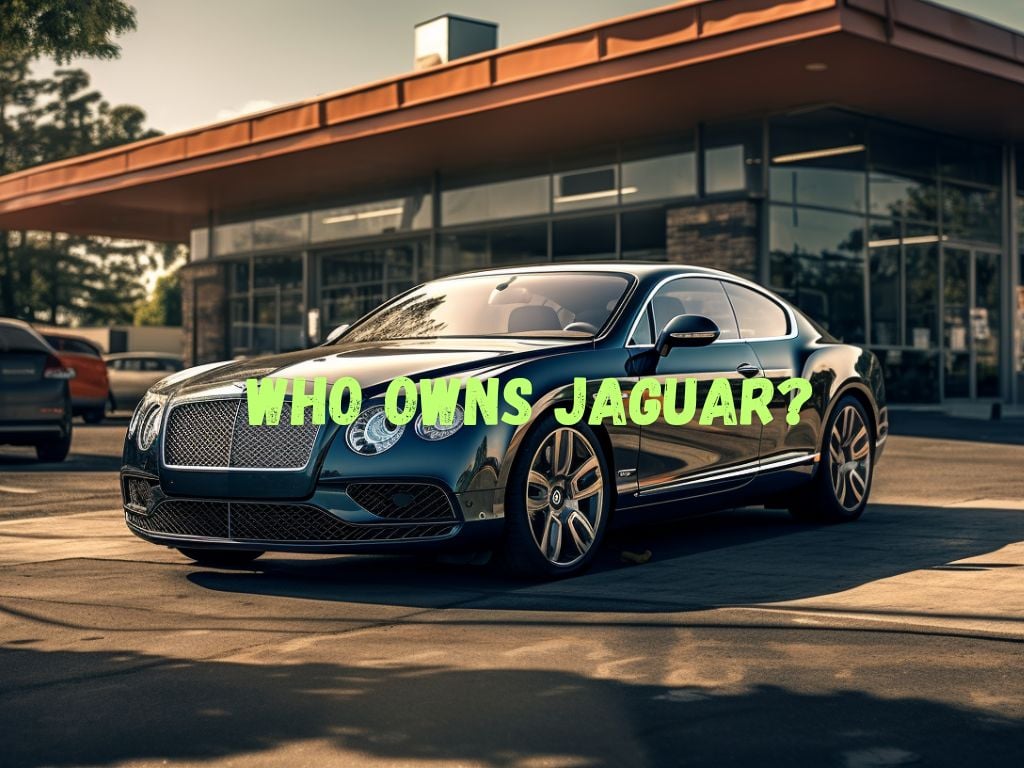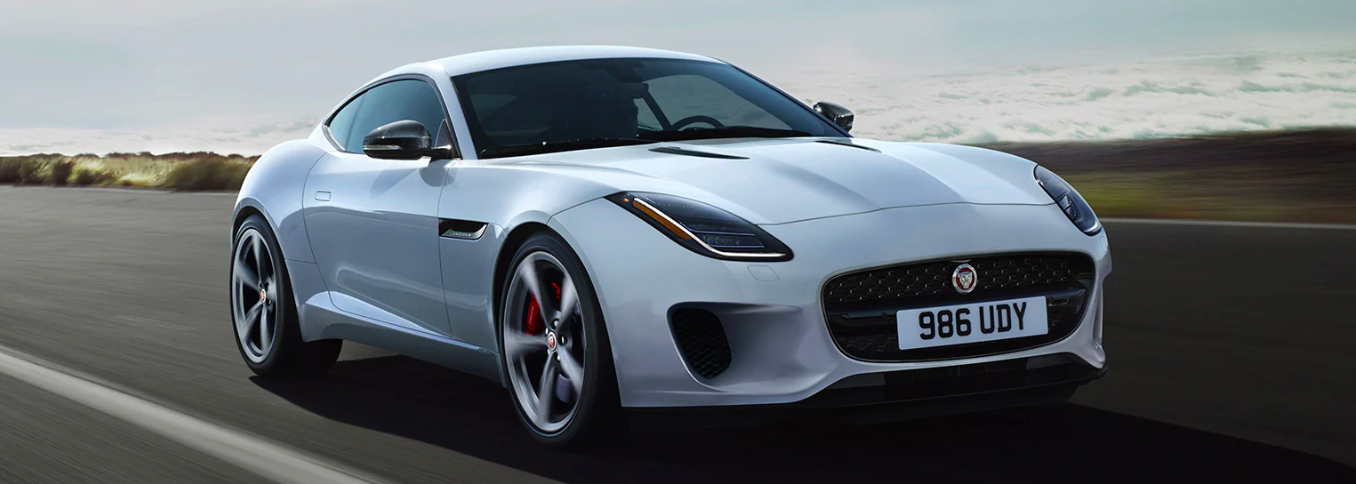Have you ever wondered about the true ownership of those sleek, powerful Jaguar cars you see gliding by? It's a question many car lovers and casual observers often ponder, and it's actually a pretty fascinating story, isn't it? For a brand so deeply rooted in British motoring heritage, its journey through different owners might just surprise you a bit. People often think of Jaguar as being purely British, and in many ways, its spirit certainly remains so, but the company's path has been a rather interesting one, crossing oceans and changing hands over the years.
There's a certain mystique surrounding Jaguar, that is for sure. Its name conjures images of luxury, speed, and a very distinct kind of elegance. This enduring image makes the question of who holds the reins behind the scenes all the more intriguing. It’s not always as straightforward as you might think with these big, historic automotive brands, and Jaguar is, in some respects, a prime example of that.
So, if you're curious about the company that guides Jaguar today, and how it got to where it is, you've come to the right place. We'll take a look at the journey this iconic car maker has been on, from its very beginnings to its current global stewardship. It's a tale of evolution, change, and enduring identity, really.
Table of Contents
- The Current Steward of Jaguar
- Jaguar's British Heart and Soul
- A Chapter with Ford
- The Shift to Tata Motors
- Bringing Jaguar and Land Rover Together
- A Glimpse into the Tata Group
- Jaguar's Guiding Purpose
The Current Steward of Jaguar
When we talk about who currently owns Jaguar, the answer is Tata Motors. This is an Indian multinational automotive company, and it’s the present owner of this distinguished British brand. Tata Motors, a very significant player in the automotive world, acquired Jaguar some time ago, and they also picked up its sibling brand, Land Rover, at the same time. It's quite a big deal, actually, for an Indian company to own such celebrated British marques. So, today, if you're wondering about the corporate parent, it's Tata Motors, which is a division of the larger Tata Industries, or the Tata Group, from India. They really do oversee things now.
The current setup means that Jaguar is part of a much larger global enterprise. Tata Motors, for its part, is a known manufacturer of many different kinds of vehicles. They make SUVs, electric cars, buses, and trucks, too. This gives you a sense of the scale of the company that now holds the reins of Jaguar. It’s a pretty diverse portfolio they have, and Jaguar fits right into that global reach. This arrangement has been in place for quite a while now, shaping the direction of the brand.
Jaguar's British Heart and Soul
Even though Jaguar has had several foreign owners over the last three decades, including Ford and now Tata Motors, it remains, at its core, a British automaker through and through. Many people naturally think of Jaguar as a British company because its heritage is so deeply ingrained in the UK. And that feeling is, in a way, very much correct. The brand’s origins, its design philosophy, and a significant part of its manufacturing history are all firmly planted in Britain. This British identity is something that has really stuck with the brand, regardless of who is signing the checks.
For instance, even when Ford owned Jaguar, parts for the cars were still made in Coventry, England. This shows a clear commitment to keeping some of the traditional elements and manufacturing close to home. So, while the ownership might have changed hands, the soul of Jaguar, its British character, seems to have endured. It's a rather important point for many enthusiasts, as it helps maintain the brand's unique appeal and history, which is quite a legacy.
A Chapter with Ford
Before Tata Motors stepped in, Jaguar was owned by Ford. This was a significant period in Jaguar's history, as the American automotive giant had purchased the British luxury car maker. Ford had a pretty extensive portfolio of brands back then, you know. As of 2008, for example, Ford owned Volvo, and they also had part ownership in Mazda and Aston Martin. So, Jaguar was just one piece of a much larger automotive puzzle for Ford during that time. It was a time of consolidation in the auto industry, and Ford was a big player in that.
The period under Ford’s ownership saw various changes and developments for Jaguar. It was a time of integration into a much larger corporate structure, which can bring both benefits and challenges for a brand with such a distinct identity. Yet, as we mentioned, even during this time, some key elements of Jaguar's production, like parts manufacturing, remained in its traditional home in Coventry, England. This sort of maintained a link to its origins, which is pretty interesting.
The Shift to Tata Motors
The big change happened in 2008. That's when Tata Motors acquired both Jaguar and Land Rover from Ford. This was a really significant transaction in the automotive world, with Tata Motors buying these two iconic brands for a sum of $2.3 billion. It was a clear signal of Tata Motors' ambition and their desire to expand their presence in the global luxury car market. This acquisition marked a new chapter for both Jaguar and Land Rover, placing them under the umbrella of an Indian multinational corporation.
This purchase was quite a moment, actually, as it meant a major shift in ownership for two very well-known British automotive names. Tata Motors, being one of the largest automotive manufacturers in India, certainly had the resources and the vision to take on such a venture. The deal was completed, and from that point on, Jaguar's corporate parent became Tata Motors. It was a rather bold move that changed the landscape for these brands, giving them a new direction and a different kind of support structure.
Bringing Jaguar and Land Rover Together
A few years after the acquisition, in 2013, a further significant step was taken. Jaguar Cars was formally merged with Land Rover to create a single entity: Jaguar Land Rover, or JLR. This merger created a unified company responsible for the design, manufacture, sales, and overall brand ownership for both Jaguar and Land Rover vehicles. It was a move to streamline operations and create a more cohesive strategy for these two premium brands, which are, you know, sort of siblings under the same parent company now.
This means that today, the parent company overseeing both Jaguar and Land Rover is Jaguar Land Rover Limited, which is, in turn, a subsidiary of the Indian car maker Tata Motors. This strategic consolidation aimed to leverage the strengths of both brands and create a more efficient and powerful force in the luxury automotive market. It’s a pretty clever way to manage two distinct but complementary brands under one roof, making them work together in a more integrated fashion. This structure is what you see today, and it really defines how the brands operate globally.
A Glimpse into the Tata Group
To really get a sense of who owns Jaguar, it helps to look at the bigger picture of the Tata Group. Tata Motors, the direct owner of Jaguar Land Rover, is itself a flagship division of the Tata Group, which is an Indian multinational conglomerate. This means Tata Motors is part of a much, much larger family of businesses, spanning many different industries around the world. It’s a truly enormous organization, honestly, with a very broad reach.
Within this vast group, Tata Sons is actually the largest shareholder of Tata Motors. They hold a significant portion of the voting power, around 35.8%. This gives you an idea of the ultimate controlling entity behind Jaguar. It’s not just one company, but a vast network of businesses with a long history and a strong presence globally. So, when you think about Jaguar’s ownership, you’re looking at a brand that is part of a truly expansive and influential conglomerate, which is pretty impressive, if you ask me.
Jaguar's Guiding Purpose
Beyond the ownership structure, it's also worth considering what drives Jaguar as a company. Jaguar is a British multinational car manufacturer, and they have a clear mission statement that guides their work. Their stated purpose is, to simply be the best in every area of their business. This mission reflects a dedication to excellence across all aspects of their operations, from the design and engineering of their vehicles to the customer experience.
This commitment to being the best is, in a way, a reflection of the brand's enduring pursuit of quality and innovation. It speaks to the ambition that has defined Jaguar throughout its history, regardless of who has owned it. It’s about striving for top performance, beautiful design, and a premium experience for those who choose a Jaguar. This guiding principle, you know, helps shape everything they do, making sure the brand stays true to its reputation for luxury and performance.
Frequently Asked Questions
Is Jaguar still a British company?
While Jaguar's heritage, design, and much of its operational identity are very much British, the company is currently owned by Tata Motors, an Indian multinational automotive corporation. So, in terms of corporate ownership, it is not British, but its roots and spirit certainly remain deeply tied to Britain.
When did Tata Motors buy Jaguar?
Tata Motors acquired Jaguar, along with Land Rover, from Ford in 2008. The purchase was a significant event, costing Tata Motors $2.3 billion for both brands.
What other car brands does Tata Motors own?
Tata Motors owns Land Rover, which is often referred to as Jaguar's sibling company. In 2013, Jaguar Cars and Land Rover were merged to form Jaguar Land Rover (JLR), which operates as a single design, manufacture, and sales company under Tata Motors.
To learn more about Jaguar's rich history on our site, you can explore the brand's journey. Also, if you're curious about the broader automotive landscape, perhaps you might want to look at how car companies evolve over time.
For additional insights into Tata Motors and its global operations, you could visit their official corporate website, which offers a lot of information about their various ventures and divisions. Tata Motors Official Site



Detail Author:
- Name : Dr. Jayce Bashirian I
- Username : vcartwright
- Email : amiya63@carroll.info
- Birthdate : 2007-03-19
- Address : 716 Prohaska Camp Apt. 667 Darylfurt, TN 59224-0247
- Phone : 1-813-798-7942
- Company : Barrows Group
- Job : CTO
- Bio : Possimus quas quas at et reprehenderit. Illum sit facere animi praesentium perspiciatis. Nihil voluptatum blanditiis alias amet. Aut voluptate nemo ut animi ut quo dolores.
Socials
facebook:
- url : https://facebook.com/norbertjast
- username : norbertjast
- bio : Enim nobis ullam totam reprehenderit aperiam et.
- followers : 399
- following : 1248
instagram:
- url : https://instagram.com/norbert5769
- username : norbert5769
- bio : Accusantium nihil soluta commodi eligendi. Dolores quo qui officiis quasi.
- followers : 477
- following : 698
twitter:
- url : https://twitter.com/jast1984
- username : jast1984
- bio : Aut dolorem et officia necessitatibus minus libero voluptatem. Ex autem cumque molestiae sequi sapiente explicabo et.
- followers : 2964
- following : 286
linkedin:
- url : https://linkedin.com/in/jastn
- username : jastn
- bio : Expedita inventore labore repudiandae dolores ut.
- followers : 540
- following : 368